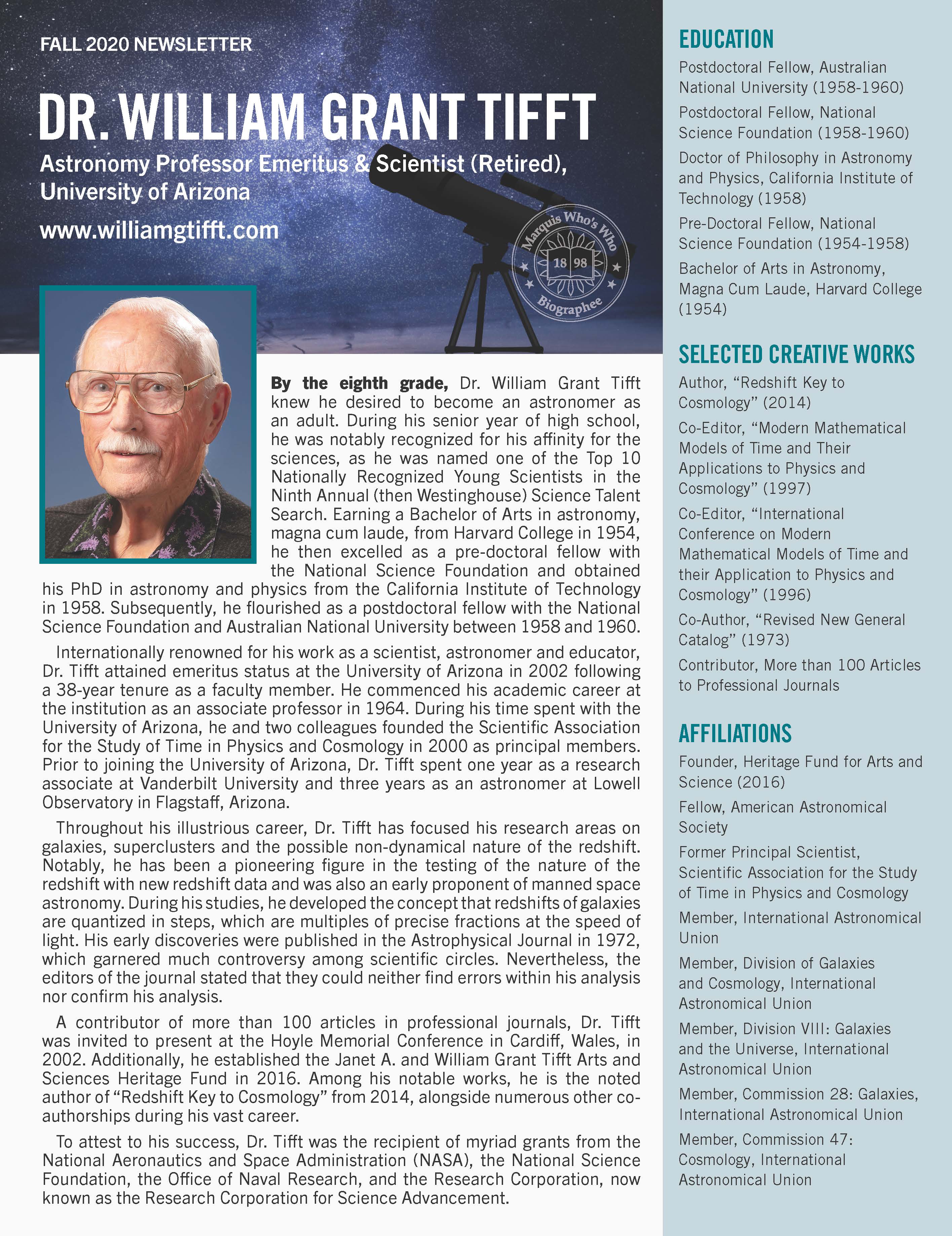
By the eighth grade, Dr. William Grant Tifft knew he desired to become an astronomer as an adult. During his senior year of high school, he was notably recognized for his affinity for the sciences, as he was named one of the Top 10 Nationally Recognized Young Scientists in the Ninth Annual (then Westinghouse) Science Talent Search. Earning a Bachelor of Arts in astronomy, magna cum laude, from Harvard College in 1954, he then excelled as a pre-doctoral fellow with the National Science Foundation and obtained his PhD in astronomy and physics from the California Institute of Technology in 1958. Subsequently, he flourished as a postdoctoral fellow with the National Science Foundation and Australian National University between 1958 and 1960.
Internationally renowned for his work as a scientist, astronomer and educator, Dr. Tifft attained emeritus status at the University of Arizona in 2002 following a 38-year tenure as a faculty member. He commenced his academic career at the institution as an associate professor in 1964. During his time spent with the University of Arizona, he and two colleagues founded the Scientific Association for the Study of Time in Physics and Cosmology in 2000 as principal members. Prior to joining the University of Arizona, Dr. Tifft spent one year as a research associate at Vanderbilt University and three years as an astronomer at Lowell Observatory in Flagstaff, Arizona.
Throughout his illustrious career, Dr. Tifft has focused his research areas on galaxies, superclusters and the possible non-dynamical nature of the redshift. Notably, he has been a pioneering figure in the testing of the nature of the redshift with new redshift data and was also an early proponent of manned space astronomy. During his studies, he developed the concept that redshifts of galaxies are quantized in steps, which are multiples of precise fractions at the speed of light. His early discoveries were published in the Astrophysical Journal in 1972, which garnered much controversy among scientific circles. Nevertheless, the editors of the journal stated that they could neither find errors within his analysis nor confirm his analysis.
A contributor of more than 100 articles in professional journals, Dr. Tifft was invited to present at the Hoyle Memorial Conference in Cardiff, Wales, in 2002. Additionally, he established the Janet A. and William Grant Tifft Arts and Sciences Heritage Fund in 2016. Among his notable works, he is the noted author of “Redshift Key to Cosmology” from 2014, alongside numerous other co-authorships during his vast career.
To attest to his success, Dr. Tifft was the recipient of myriad grants from the National Aeronautics and Space Administration (NASA), the National Science Foundation, the Office of Naval Research, and the Research Corporation, now known as the Research Corporation for Science Advancement.